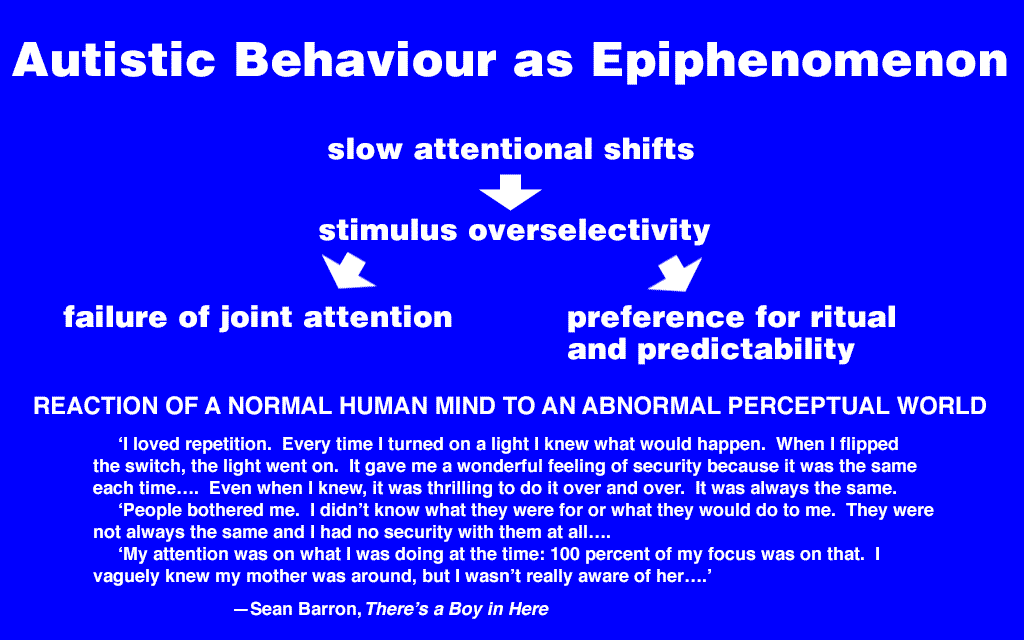

Overselective perception, in turn, can lead to a preference for ritualised, repetitive behaviour and to a failure to develop joint social attention, the ability to coordinate attention between external events and the people with whom those events are being shared.
One of my favourite explanations of the relationship between attention and social behaviour comes from Sean Barron's book There's a Boy in Here.
Barron was a child with autism who eventually developed communicative language, and as an adult wrote a book about his experiences.
He wrote: [see text above]
![[previous]](../left_arrow.gif) |
![[contents]](../up_arrow.gif) |
![[next]](../right_arrow.gif) |